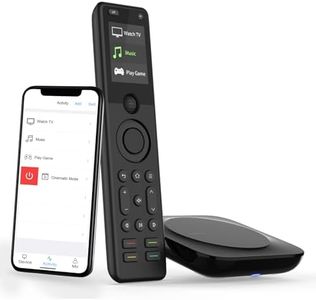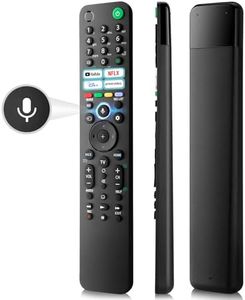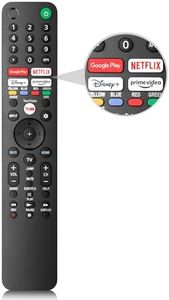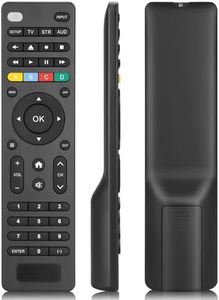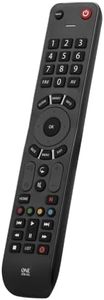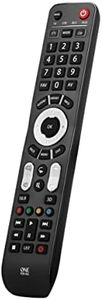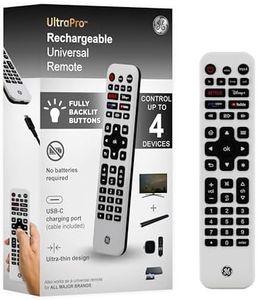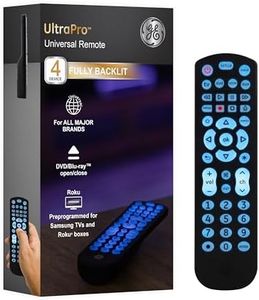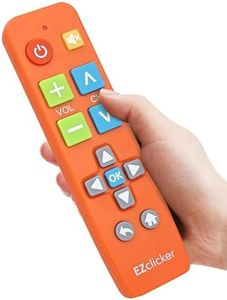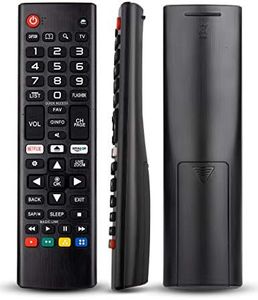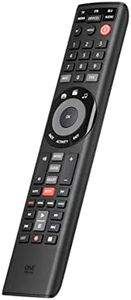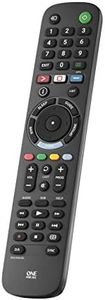We Use CookiesWe use cookies to enhance the security, performance,
functionality and for analytical and promotional activities. By continuing to browse this site you
are agreeing to our privacy policy
10 Best Universal Remotes
From leading brands and best sellers available on the web.Buying Guide for the Best Universal Remotes
Choosing the right universal remote can make controlling your home entertainment system more simple and enjoyable. The main goal is to find a remote that can replace the collection of remotes you already have, while being easy to set up and use for your specific needs. Start by considering the number of devices you need to control, the features that matter most to you, and how comfortable the remote feels in your hand. By understanding the key specifications, you’ll be able to narrow down the options and find the best fit for your lifestyle.Device CompatibilityDevice compatibility means how many and what types of devices the universal remote can control, such as TVs, soundbars, streaming boxes, and gaming consoles. This is important because each remote can recognize only a certain range of brands and device types. Some remotes work with just a couple of kinds of devices, while others can manage ten or more different gadgets, including less common or older brands. If you only want to control a TV and a soundbar, a simple universal remote is fine, but if you have many devices or some smart home gear, look for broader compatibility. Always check that the remote specifically supports every device you plan to use it with.
Programming MethodThis specification refers to how you set up the remote to control your devices. Some remotes use code entry (where you punch in a code from a booklet), others offer automatic code search, and more advanced options let you program them via apps or connect to the internet for updates. Simpler remotes may be quicker to set up with basic devices, while app-based or internet-enabled programming can make setup easier for complex systems or newer devices. If you're not comfortable with technology, stick with a manual code entry or automatic search; but if you want more features and future-proofing, an app-based or online approach might be better.
Number of Devices SupportedThis tells you how many different gadgets the remote can be paired with at once. Some basic models handle only two or three devices, while advanced ones can control over a dozen. Think about how many boxes, consoles, or players you surround your TV with—you need a remote that covers at least that number, plus maybe one or two extra for expansion. If you have a simple setup, a low number is fine; for lots of gear in one space, choose a higher-capacity remote.
Button Layout and DesignThe layout and design of the buttons affect how comfortable and easy it is to use the remote. Some are laid out like your old remotes, while others have touch screens or extra customizable buttons. A crowded or confusing layout can lead to mistakes or frustration, especially in low-light rooms. If you prefer familiarity, look for a layout that matches your current remotes; if you want faster access to smart functions, look for remotes with customizable, grouped, or backlit buttons. Choose a design that feels good in your hand and is easy for everyone in your household to use.
Smart Home IntegrationSmart home integration means whether the remote can control things like smart lights, thermostats, or voice assistants, beyond just your entertainment system. This is becoming more important as smart homes become common. Some universal remotes work only with traditional devices, while others can operate connected home products too. If your home has smart devices you want to control with your remote, look for models mentioning smart home or voice assistant compatibility. If you don’t use any of those yet, you can skip this feature.
Build Quality and Battery TypeThis refers to how sturdy the remote feels and what kind of batteries it uses (like AA, AAA, or rechargeable). Build quality matters because remotes get dropped and handled a lot, so a flimsy one may break or wear out quickly. Battery type affects convenience—standard batteries are easy to replace, while rechargeable ones are eco-friendly but require regular charging. Think about who will use it and where: if it’s for kids or a busy living room, toughness matters; if you want low maintenance, opt for a remote with a long battery life.
